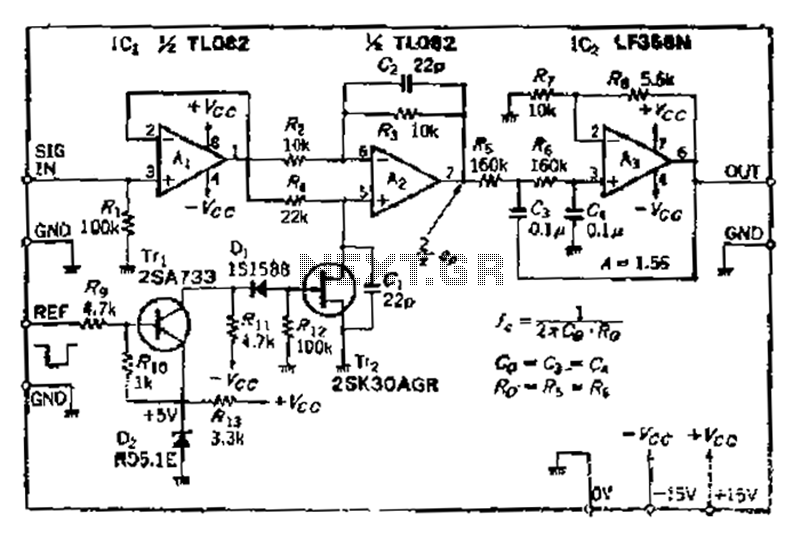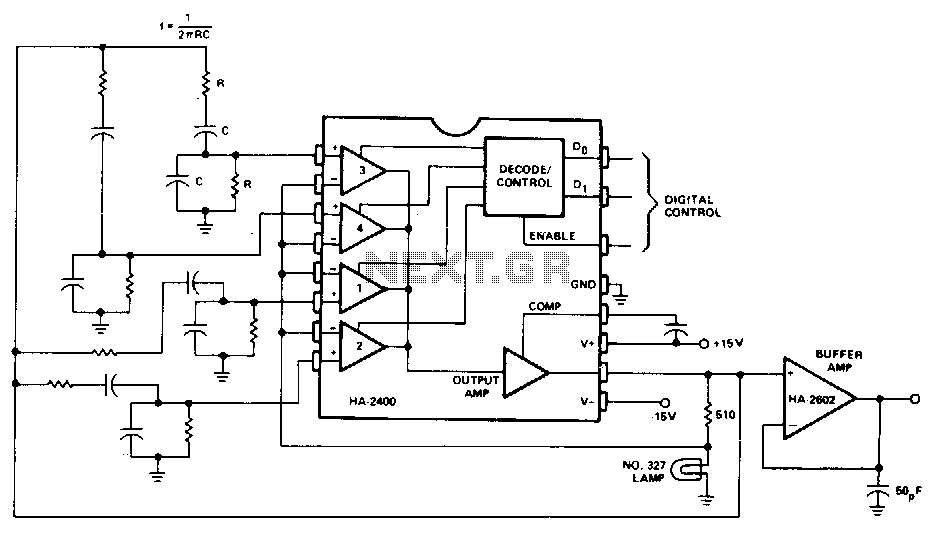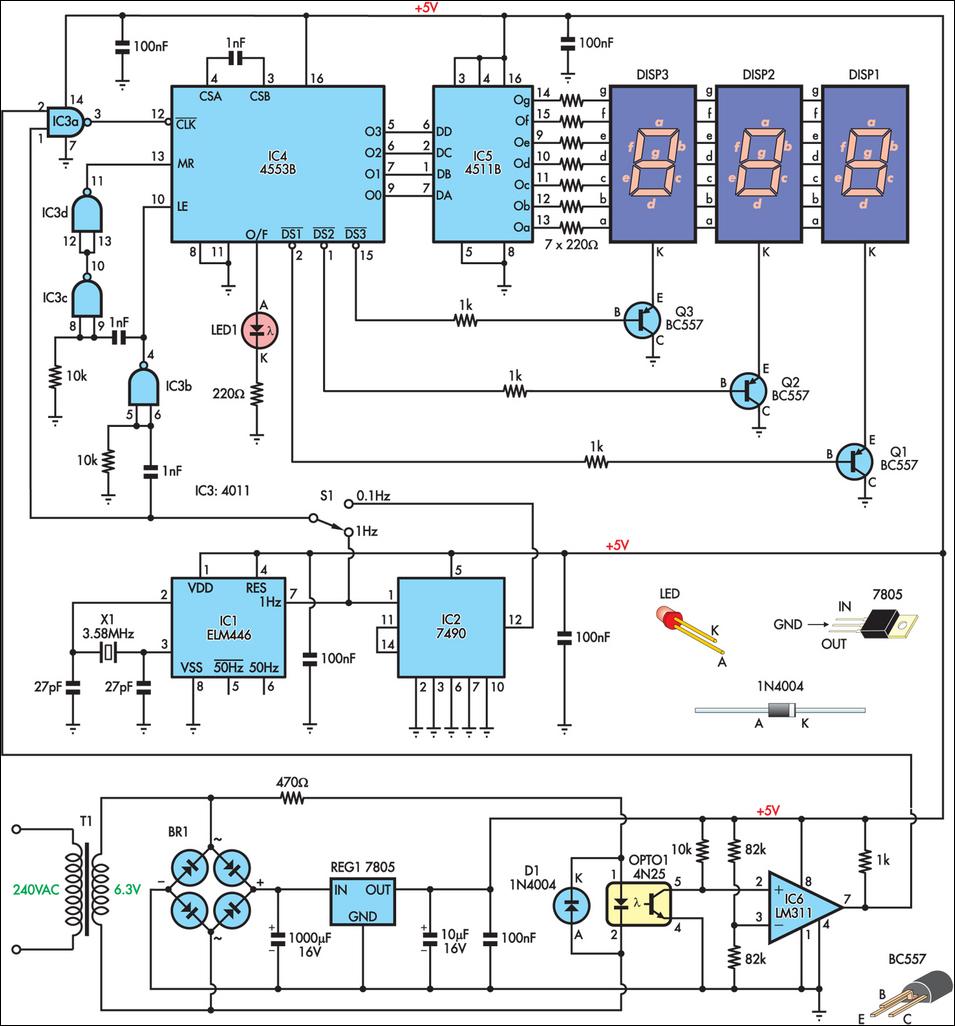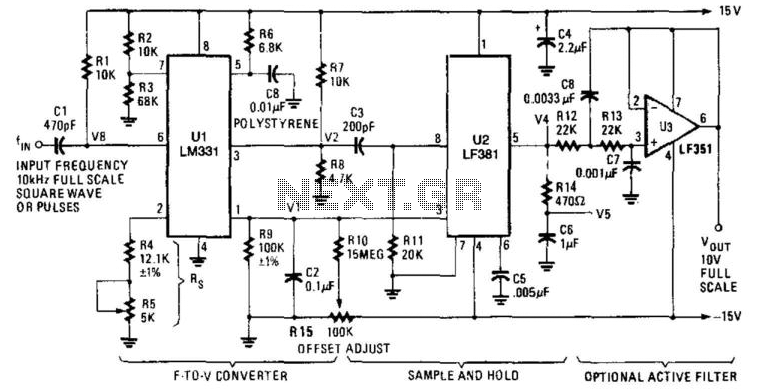
Ten-segment frequency equalizer
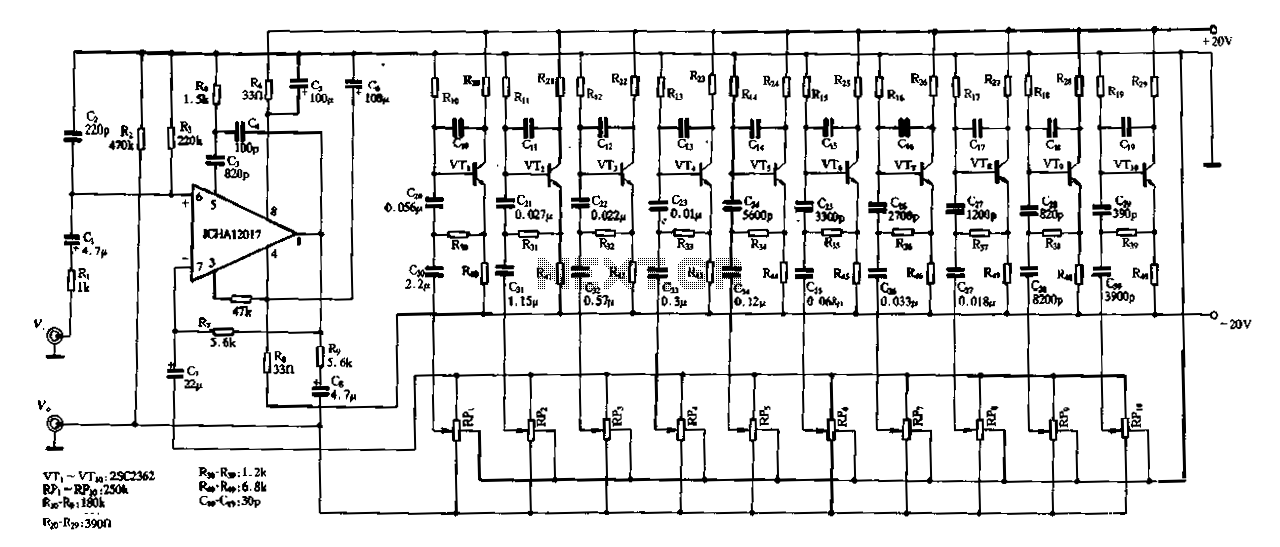
Figure 1-97 illustrates a ten-band equalizer circuit with its initial connection. Figure 1C represents the utility voltage amplifier, with R7 functioning similarly to the island depicted in Figure 1-92 R1. Additionally, R2 and the transistors VTr to VTio form the primary components of the inductor simulation. The component C39 serves as the resonance capacitance for the bandpass filter, corresponding to the equivalent capacitance shown in Figure 1-93(b) with C1, C20 to C29 equivalent to C2.
The ten-band equalizer circuit is designed to allow precise control over audio frequency ranges, providing the capability to enhance or attenuate specific bands of audio signals. The circuit utilizes a voltage amplifier, which is critical for maintaining signal integrity and ensuring that the output levels are consistent across all bands. The resistive components, such as R7 and R2, are integral in setting the gain and shaping the frequency response of the equalizer.
The configuration of ten transistors, labeled from VTr to VTio, is employed to create an inductor simulation, which allows for the emulation of inductive behavior without the need for physical inductors. This approach can significantly reduce the size and weight of the circuit while maintaining performance. Each transistor can be controlled to vary the impedance at different frequency bands, thus contributing to the overall equalization process.
The bandpass filter resonance capacitance, represented by C39, is crucial for defining the bandwidth of each frequency band. This component works in conjunction with resistors and the transistor network to create a filter that allows only a specific range of frequencies to pass through while attenuating others. The reference to equivalent capacitances (C1, C20 to C29) in Figure 1-93(b) indicates that these capacitors are selected to match the desired frequency response characteristics of the equalizer, ensuring that the circuit performs optimally across the audio spectrum.
In summary, the ten-band equalizer circuit utilizes a combination of voltage amplification, resistive elements, and transistor-based inductor simulation to achieve a versatile and efficient audio processing solution. The careful selection and arrangement of components are essential for achieving the desired frequency response and maintaining signal fidelity.Figure 1-97 is a ten-band equalizer circuit with a first connection thereof. FIG lC is the utility voltage amplifier, R7, respectively, equivalent to the island in Fig 1-92 Rl, R2, VTr-VTio ten transistors is mainly composed of inductor simulation, ~ C39 is the band bandpass filter resonance capacitance, corresponding to FIG. 1-93 (b) in C1, C20 ~ lC29 equivalent C2 0
The ten-band equalizer circuit is designed to allow precise control over audio frequency ranges, providing the capability to enhance or attenuate specific bands of audio signals. The circuit utilizes a voltage amplifier, which is critical for maintaining signal integrity and ensuring that the output levels are consistent across all bands. The resistive components, such as R7 and R2, are integral in setting the gain and shaping the frequency response of the equalizer.
The configuration of ten transistors, labeled from VTr to VTio, is employed to create an inductor simulation, which allows for the emulation of inductive behavior without the need for physical inductors. This approach can significantly reduce the size and weight of the circuit while maintaining performance. Each transistor can be controlled to vary the impedance at different frequency bands, thus contributing to the overall equalization process.
The bandpass filter resonance capacitance, represented by C39, is crucial for defining the bandwidth of each frequency band. This component works in conjunction with resistors and the transistor network to create a filter that allows only a specific range of frequencies to pass through while attenuating others. The reference to equivalent capacitances (C1, C20 to C29) in Figure 1-93(b) indicates that these capacitors are selected to match the desired frequency response characteristics of the equalizer, ensuring that the circuit performs optimally across the audio spectrum.
In summary, the ten-band equalizer circuit utilizes a combination of voltage amplification, resistive elements, and transistor-based inductor simulation to achieve a versatile and efficient audio processing solution. The careful selection and arrangement of components are essential for achieving the desired frequency response and maintaining signal fidelity.Figure 1-97 is a ten-band equalizer circuit with a first connection thereof. FIG lC is the utility voltage amplifier, R7, respectively, equivalent to the island in Fig 1-92 Rl, R2, VTr-VTio ten transistors is mainly composed of inductor simulation, ~ C39 is the band bandpass filter resonance capacitance, corresponding to FIG. 1-93 (b) in C1, C20 ~ lC29 equivalent C2 0
